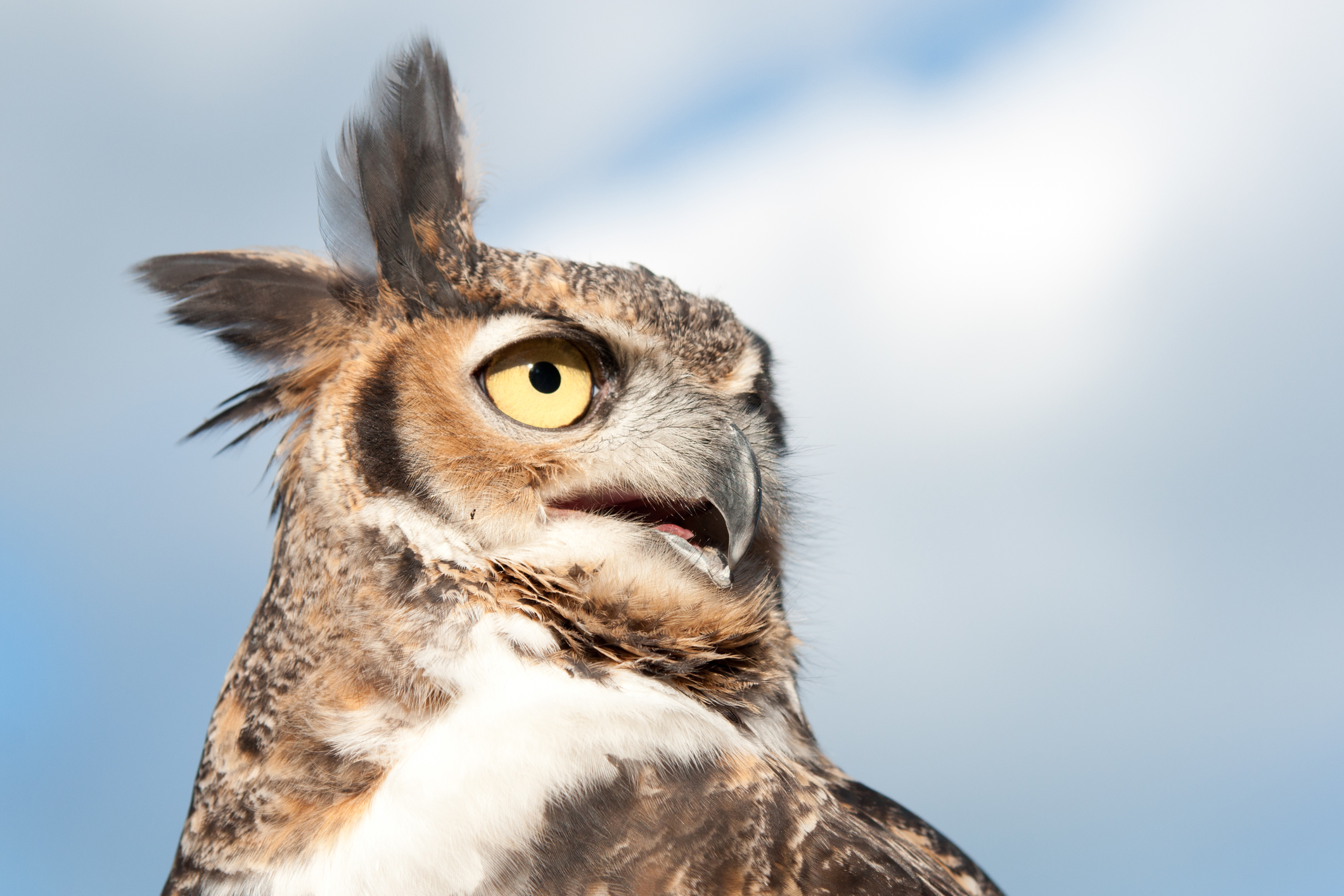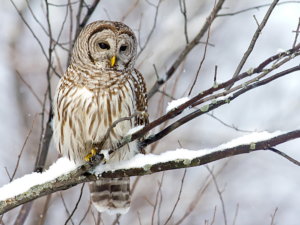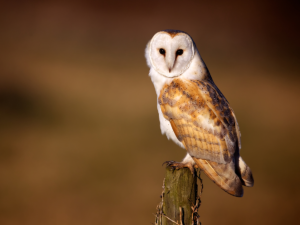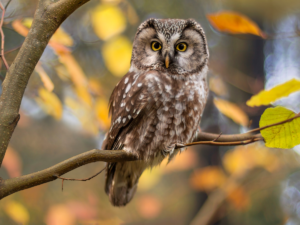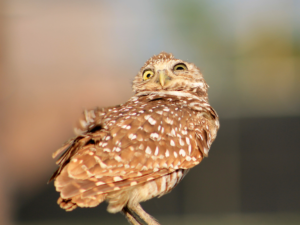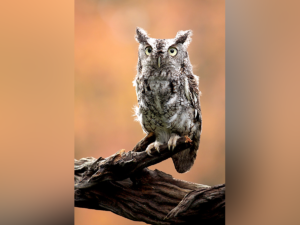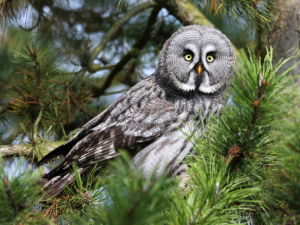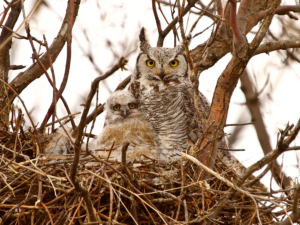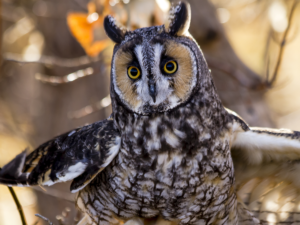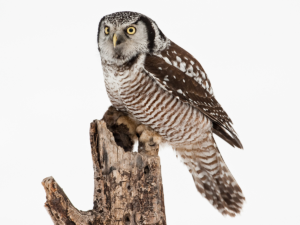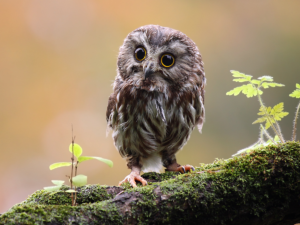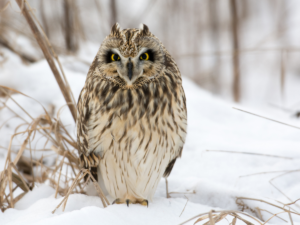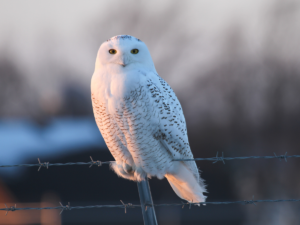Minnesota Hosts 12 Species of Owls
By Minnetonka Manager CAROL CHENAULT
Twelve species of owls can be found somewhere in Minnesota but not throughout the whole state. These are the Barn, Barred, Boreal, Burrowing, Eastern Screech, Great Gray, Great Horned, Long-eared, Northern Hawk, Northern Saw-whet, Short-eared and Snowy Owl.
Not all owls are strictly nocturnal. Owls can see perfectly well during the day. Hunting at night reduces competition from other predators, however. Great Gray, Northern Hawk and Snowy owls hunt during the day. These owls are “irruptive” winter visitors, meaning they are more abundant in some winters than others. They will move further south in Minnesota when lemming and rodent populations plummet in northern areas. Northern Hawk owls are the most likely owl to be seen on exposed perches on top of a pole or conifer during the day.
The Great Gray owl is the largest owl in North America at 24”-33” tall. One of its identifying markings is the white patches near the beak that form an X shape. Of all Minnesota owls, Great Gray’s rely the most on their hearing. This owl can hear a vole moving under 18” of snow! Also impressive is the Long-eared owl – they can hear and snatch insects in pitch black.
Owls’ ears are positioned back and to the side of their eyes with one ear located higher than the other. Hearing from two different angles helps owls zero in on the sounds of mice rustling in the grass, for example. Facial disc feathers form parabolic disks that funnel sound to the ears. The “horns” or “ears” of so named owls are not horns or ears at all but rather tufts of display feathers.
Owls have long flexible necks that allow for turning their heads 270 degrees and nearly upside down! Owls cannot move their eyes as they are fixed in position which makes head movement necessary to see directionally. If our eyes took up as much space on our faces as owls do proportionally, our eyes would be grapefruit sized!
Owls have specialized flight feathers with fringed edges of varying softness These edges allow for nearly silent flight, a great benefit when hunting! Though Great Horned owls eat 4,000 mice a year they also eat a variety of other things. Minnesota owls as a species eat amphibians, birds, crayfish, earthworms, fish, insects, small mammals and snakes. Burrowing owls cache food in their burrows to sustain themselves and their young when food is scarce. Owls often swallow prey whole. Undigestible bits like bone and fur are coughed up in pellet form.
Most owls do not build their own nest or excavate their own nesting cavity. Those that nest in trees use abandoned nests of crows, eagles, hawks or ravens. Cavity nesting owls will use holes made by woodpeckers, natural tree cavities, the broken tops of trees or Wood duck boxes. Burrowing owls live and nest in abandoned burrows underground originally excavated by mammals such as badgers and ground squirrels. Short-earred owls nest on the ground in a shallow depression lined with grass.
It is surprising to realize that the list of predators for many owls includes the Great Horned owl, aptly named “The Tiger of the Sky.” The Great Horned Owl is one of the few predators that will kill a skunk, perhaps because it doesn’t have a keen sense of smell. The biggest threat to owls is habitat loss. You can help by leaving dead trees standing for cavity nesters. Poisons are also a threat because owls eat so many mice and rodents. Trap instead of poison rodents.
The owls most likely to be seen in the metro area during the winter are the Barred, Great Horned and the Eastern Screech owls. Sax-Zim bog in northern Minnesota is a great place to see Great Gray, Northern Hawk, Snowy owls and perhaps the Boreal owl. Before you plan a trip to the bog check out the website www.sax-zimbog.com


